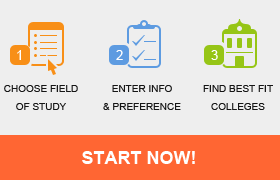Fairfield University
STUDENTS AND FACULTY
Enrollment: 3,623.
Student Body: 58% female, 42% male, 73% out-of-state, 1% international (58 countries represented). Asian 3%, African American 4%, Caucasian 60%, Hispanic 8%.
Retention and Graduation: 88% freshmen return for sophomore year. 83% freshmen graduate within 4 years. 21% grads go on to further study within 1 year. 5% grads pursue arts and sciences degrees. 4% grads pursue law degrees. 5% grads pursue business degrees. 3% grads pursue medical degrees.
Faculty: Student/faculty ratio 13:1. 253 full-time faculty, 92% hold PhDs, 49% are women.
ACADEMICS
Degrees: Associate, bachelors, masters, post-masters certificate.
Classes: Most classes have 20-29 students.
Majors with Highest Enrollment: Finance; nursing/registered nurse (RN, ASN, BSN, MSN); psychology.
Special Study Options: Cross-registration, double major, exchange student program (domestic), honors program, independent study, internships, liberal arts/ career combination, student-designed major, study abroad, teacher certification program, 3/2 Program with UCONN, Rensselaer Polytechnic Institute of Technology, Columbia and Stevens Institute of Technology.
Honors programs: Magis Scholars, Four year Honors Program, Corrigan Research Scholars. Combined degree programs: BA/MEng, BS/MS Software Engineering. Special programs offered to physically disabled students include note-taking services, reader services, tape recorders, tutors.
Career services: Alumni network, alumni services, career/job search classes, career assessment, internships.
Career services highlights include: Fairfield’s proximity to NYC, Stamford, and Bridgeport maximizes student opportunities for internships in all majors from finance to psychology.
FACILITIES
Housing: Coed dorms, special housing for disabled students, apartments for single students, Wellness Floor, Sophomore College, Women in Math & Science, Freshmen Residence Halls, Diversity & Social Justice Floor (for Sophomores), Leadership House, Community Service House, The Green House, Empowering Women House; Extensive theme based living-learning options for sophomores. 70% of campus accessible to physically disabled.
Special Academic Facilities/Equipment: Quick Center for the arts, 2 art galleries, media center, TV studio, language labs, computer center for teacher education,. Business Experiential, Simulation & Trading Floor (BEST) at the School of Business. School of Nursing Learning Resource center is a simulated hospital environment with a Human Patient Simulator (SimMan) for simulation based learning.
Computers: 50% of classrooms, 100% of dorms, 100% of libraries, 100% of dining areas, 100% of student union, 5% of common outdoor areas have wireless network access. Students can register for classes online. Administrative functions (other than registration) can be performed online.
CAMPUS LIFE
Environment: Town.
Activities: Choral groups, concert band, dance, drama/ theater, jazz band, literary magazine, music ensembles, pep band, radio station, student government, student newspaper, student-run film society, television station, yearbook, campus ministries, international student organization, Model UN.
Organizations: 110 registered organizations, 21 honor societies, 3 religious organizations.
Athletics (Intercollegiate): Men: Baseball, basketball, crew/rowing, cross-country, diving, golf, lacrosse, soccer, swimming, tennis. Women: Basketball, crew/rowing, cross-country, diving, field hockey, golf, lacrosse, soccer, Softball, swimming, tennis, volleyball.
On-Campus Highlights: Quick Center for the Arts(includes Walsh Art Gallery, Kelley Theatre and Wien Theatre, Egan/Loyola Chapel, DiMenna-Nyselius Library, Leslie C. Quick, Jr. Recreation Complex, Barone Campus Center (Student Center), Jazzman’s Coffee Bar. Environmental Initiatives: The School has joined Campus Climate Pact. Built a Co-generation facility providing 90% of campus electricity; 60% campus heating. Large scale recycling and composting/biofuels initiative. While there is no Full-time dedicated staff person, sustainability efforts are performed by several folk and overseen by the Environmental Steering Committees that was convened in 2006-07 and meets quarterly.
ADMISSIONS
Freshman Academic Profile: Average high school GPA 3.4. 41% in top 10%. of high school class, 78% in top 25% of high school class, 95% in top 50% of high school class. 55% from public high schools. SAT Math middle 50% range 530-630. SAT Critical Reading middle 50% range 520-610. SAT Writing middle 50% range 530-630. Minimum paper TOEFL 550. Minimum computer TOEFL 213. Minimum web-based TOEFL 80.
Basis for Candidate Selection: Very important factors considered include: Application essay, academic GPA, recommendation(s), rigor of secondary school record. Important factors considered include: Character/personal qualities, extracurricular activities, first generation, interview, talent/ability, volunteer work, work experience. Other factors considered include: Class rank, standardized test scores, alumni/ae relation, geographical residence, racial/ethnic status.
Freshman Admission Requirements: High school diploma is required and GED is not accepted. Academic units required: 4 English, 3 mathematics, 2 science, (2 science labs), 2 foreign language, 2 social studies, 2 history, 1 academic electives. Academic units recommended: 4 English, 4 mathematics, 3 science, (2 science labs), 4 foreign language, 2 social studies, 2 history, 1 academic electives.
Freshman Admission Statistics: 8,420 applied, 72% admitted, 15% enrolled.
Transfer Admission Requirements: High school transcript, college transcript(s), essay or personal statement, statement of good standing from prior institution(s). Minimum college GPA of .03 required. Lowest grade transferable C.
General Admission Information: Application fee $60. Regular application deadline 1/15. Regular notification 4/1. Nonfall registration not accepted. Admission may be deferred for a maximum of 1 year. Credit and/or placement offered for CEEB Advanced Placement tests.
COSTS AND FINANCIAL AID
Annual tuition $36,900. Room and board $11,270. Required fees $590. Average book expense $900.
Required Forms and Deadlines: FAFSA, CSS/Financial Aid PROFILE, noncustodial PROFILE, business/farm supplement. Financial aid filing deadline 2/15. Priority financial aid filing date 2/15.
Notification of Awards: Applicants will be notified of awards on or about 4/1.
Types of Aid: Need-based scholarships/grants: Federal Pell, SEOG, state scholarships/grants, private scholarships, the schools own gift aid, Federal Nursing Scholarships. Loans: FFEL Subsidized Stafford, FFEL Unsubsidized Stafford, FFEL PLUS, Federal Perkins, Federal Nursing, Alternative Loans.
Student Employment: Federal Work-Study Program available. Institutional employment available. Highest amount earned per year from on-campus jobs $1,500. Off-campus job opportunities are good.
Financial Aid Statistics: 49% freshmen, 49% undergrads receive need-based scholarship or grant aid. 17% freshmen, 15% undergrads receive non-need-based scholarship or grant aid. 48% freshmen, 46% undergrads receive need-based self-help aid. 6% freshmen, 7% undergrads receive athletic scholarships. 68% freshmen, 63% undergrads receive any aid. 60% undergrads borrow to pay for school. Average cumulative indebtedness $35,161.
Criteria for awarding institutional aid: Non-need-based: Academics, alumni affiliation, art, athletics, leadership, music/drama.

